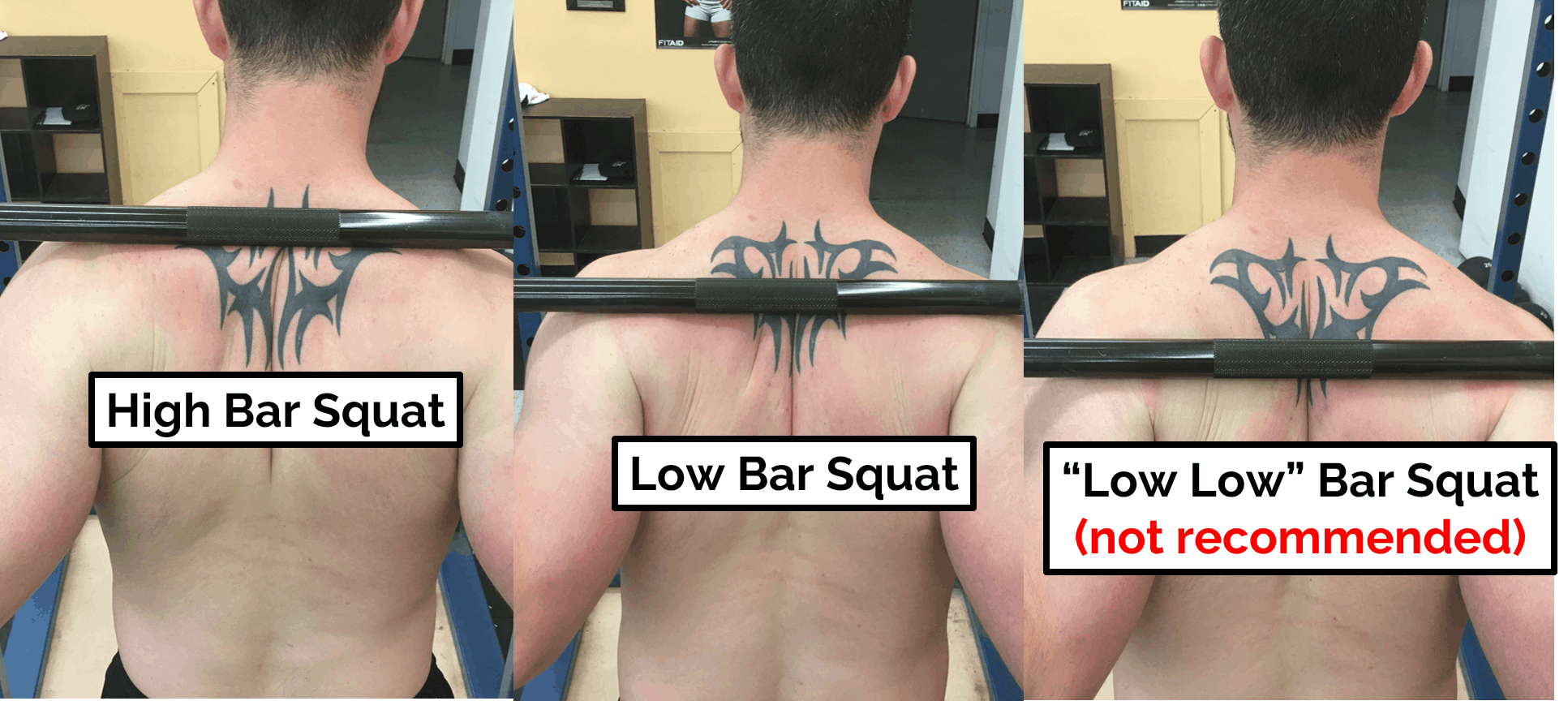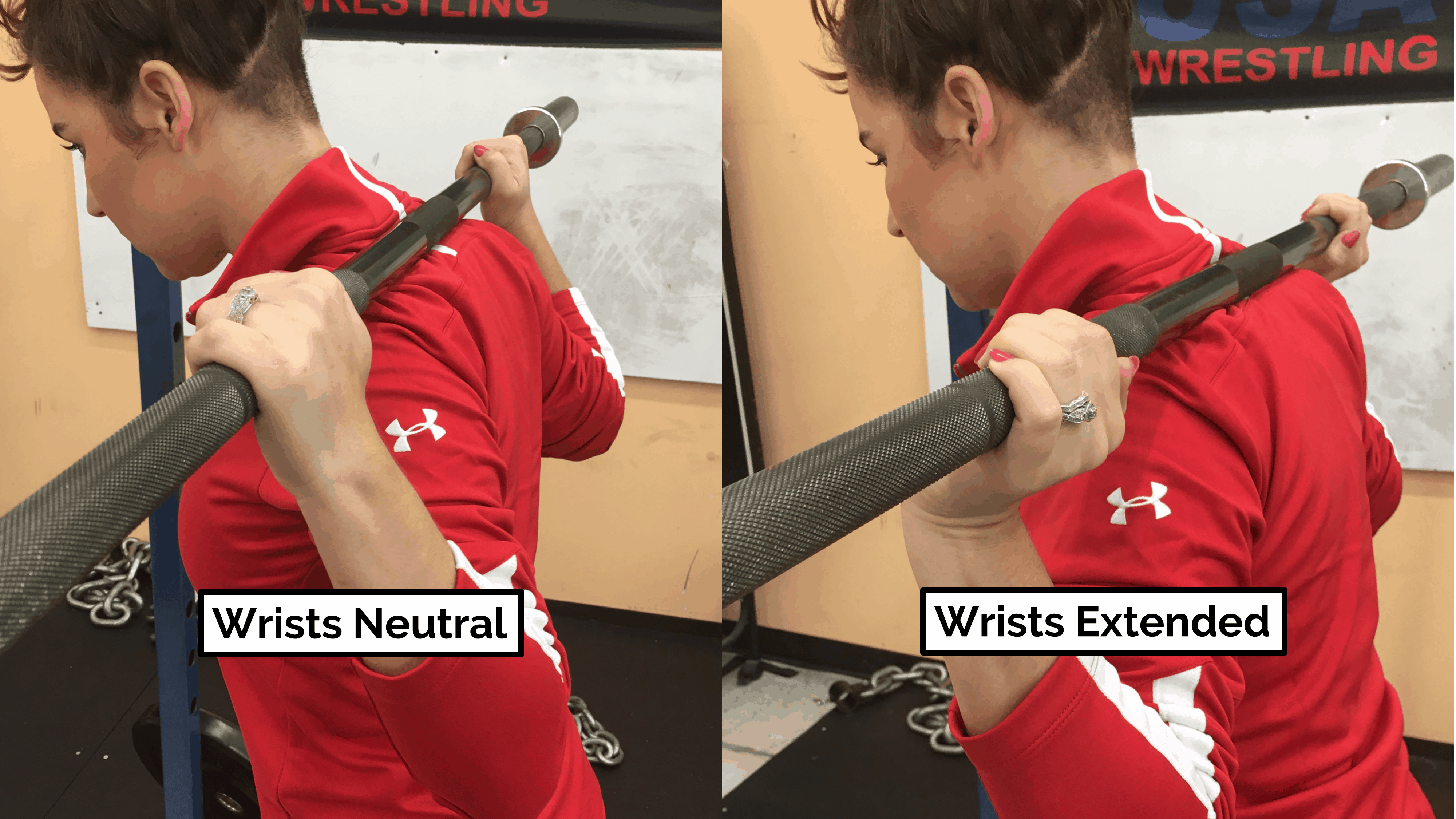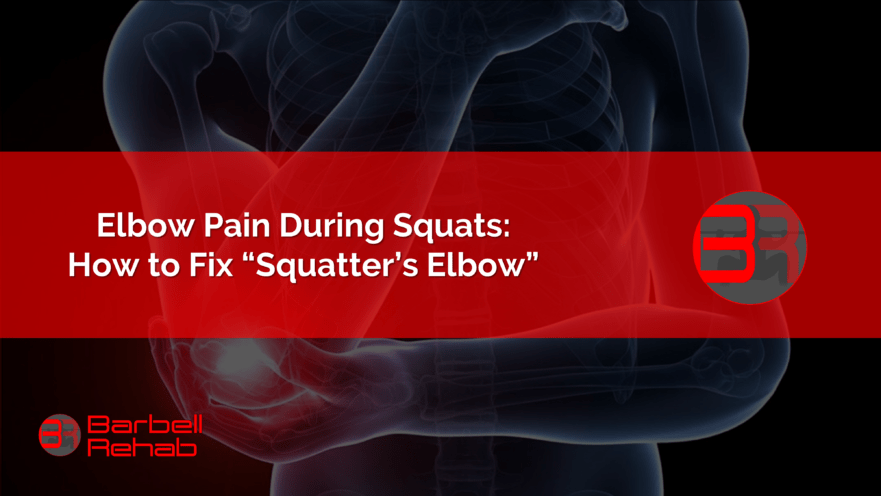Elbow pain during squats can be an annoying injury for many lifters. While it’s rarely debilitating, it often lingers around for a while if not properly managed. Before we get to tips on how to treat it, let’s talk about what could be contributing to it.
Stop “Low Low” Bar Squatting
In an optimal low bar squat, the barbell rests on a shelf created by the rear deltoids. A common form fault I see is resting the bar lower than this ON the rear deltoids. Carrying the bar this low requires a lot of shoulder external rotation mobility, and puts excessive strain on the medial (inside) aspect of the elbow. This can then lead to pain on this part of the elbow and cause something called medial epicondylalgia, better known as “golfer’s elbow.” Low low bar squatting can be a primary contributing factor to elbow pain during squats.

One of the key parts of any rehabilitative process is to remove the aggravating factors. So if you’re squatting with the bar too low on your back (picture on the right), the first thing I would do is move it up some (picture in the middle).
High Bar Squat to Reduce Elbow Pain
If you were low bar squatting with the bar too low on your back, and moving it up a few inches wasn’t enough to reduce your elbow pain, performing a high bar squat for 3-6 weeks can help. By moving the bar even more up the back, this will reduce the shoulder flexibility demands, and thus the strain on the inner elbow.
The low bar squat is not the end-all be-all of squat variations. The goal here is to find a variation that allows you to continue to achieve a training effect while simultaneously decreasing your symptoms. The high bar squat can do exactly this.
Try to Achieve a Neutral Wrist
Another common reason that you could be experiencing pain on the inside of your elbow is a less than optimal wrist position on the squat. In order to optimally disperse the load of the barbell across your upper back during the squat, you want to try and maintain a neutral wrist. If you squat with an extended wrist AND you have current elbow pain, this could be another factor that is keeping the pain lingering around.
When you squat with your wrist extended, especially for higher rep sets, this puts your forearm flexors, the muscles that attach to the inside of your elbow, in a state of a continuous loaded stretch. For an already cranky elbow, this position is often not tolerated very well. Try and get your wrists into a neutral position to help reduce this pain.

Alter Grip Width
Another form modification you can make, which goes hand in hand with the recommendations above, is to alter your grip width. Many times moving the grip out a little can allow you to achieve more of a neutral wrist position and help offload the painful part of your elbow, reducing your elbow pain during squats.
However, this isn’t always the case. I recommend trying to move the grip both in AND out and see if you can find a position that feels more comfortable for your elbow.
Slow Wrist Curls to Load the Tendon and Overcome Elbow Pain
Once you’ve adjusted the position of the barbell on your back and optimized your wrist position and grip width, this should help to calm down the symptoms, but you should still load the tendon directly to build up it’s strength and capacity.
One of the best ways to progressively load the wrist flexors is to perform slow wrist curls. I recommend 2-3 sets of 10-15 reps every other day with a (3:0:3) tempo, meaning you’ll lower the weight slowly for 3 seconds and then raise it slowly for 3 seconds. You can increase the weight too as you progress through this. This is the step that many neglect, and it’s important in order to build up the strength of the tendon.

